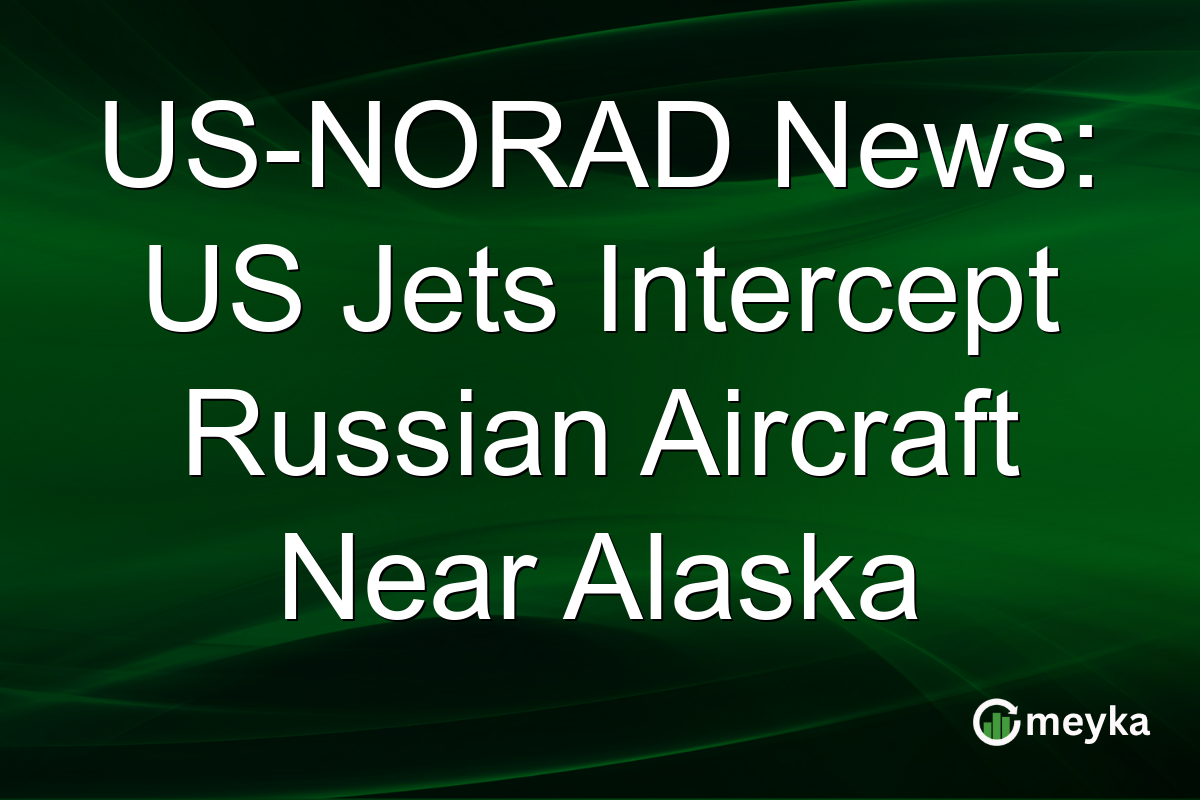US-NORAD News: US Jets Intercept Russian Aircraft Near Alaska
In the early hours of today, US fighter jets were deployed to intercept Russian military aircraft near the Alaska Air Defense Identification Zone (ADIZ). This incident, involving multiple Russian aircraft, is the latest in a series of encounters highlighting the strategic significance of the Arctic region. As tensions between the US and Russia persist, the implications of these events reverberate through national security discussions and international diplomatic channels.
Geopolitical Implications of Russian Aircraft Near Alaska
The presence of Russian military aircraft near Alaska has reignited discussions about the geopolitical stakes in the Arctic. Analysts suggest these continual flights are not mere military exercises but strategic moves to assert Russia’s influence in a region critical for global trade and national security. The Arctic’s melting ice has opened new shipping routes, making it increasingly significant for economic and military strategies. As Russian aircraft continue to test the boundaries of the US’s northern defenses, it raises questions about deterrence and the potential for escalated conflict. More on CNBC. The US, in response, emphasizes its commitment to safeguarding its airspace and ensuring the Arctic remains a peaceful zone of cooperation. This incident shows the importance of maintaining robust defense mechanisms to deter any aggressive actions while balancing diplomatic engagement.
US NORAD Response to Alaska Airspace Violation
The North American Aerospace Defense Command (NORAD) was quick to respond to this latest Alaska airspace violation by deploying F-22 jets to intercept and monitor the Russian aircraft. NORAD’s capability to swiftly react underscores the US’s readiness and vigilance in protecting its airspace. This tactical move aims to prevent any potential threat and showcases the US’s strategic military posture in the Arctic. The F-22s shadowed the Russian aircraft, which eventually turned away from the ADIZ, thereby preventing any escalation. This precise and controlled response by NORAD underlines the importance of maintaining strong defense systems and intelligence operations in ensuring national security.
Russian Military Aircraft Incursions: A Growing Trend
Recent incidents involving Russian military aircraft near Alaska reflect a growing pattern where Russia seeks to test and measure US reactions and capabilities. This isn’t an isolated event; rather, it forms part of a broader strategy observed over recent years. According to reports, there have been multiple such incursions this year alone, each managed without escalation but still stressing the tense US-Russia relations. The strategic objective of such flights likely includes reconnaissance and psychological operations to gauge military response times and strategies. These acts maintain pressure on diplomatic discussions and require continual readiness from US defense forces, as well as international collaborations to handle potential geopolitical instability.
Expert Analysis on Military Tensions and Economic Impact
Experts warn that these military tensions could have broader economic implications, especially concerning Arctic trade routes and natural resources. As the Arctic becomes a focal point for economic opportunities, supported by new data on oil reserves and transport efficiencies, such geopolitical frictions can lead to uncertainties affecting global markets. For investors, these developments are critical to understanding how military actions might influence energy prices and supply chains. Keeping an eye on these tensions, alongside the economic policies of Arctic nations, can provide valuable insights into market movements and investment risks. Read more on Reuters.
Final Thoughts
The recent interception of Russian aircraft by US fighter jets near Alaska is a reminder of the persistent geopolitical challenges in the Arctic region. This strategic area holds significant economic and military importance, with both the US and Russia engaging in a delicate balance of power. Investors and policymakers alike must pay close attention to these developments in order to anticipate potential shifts in global security dynamics and economic conditions. With increasing military activities, understanding the implications on international relations and market stability becomes essential. For those interested in real-time insights and predictive analytics, platforms like Meyka provide valuable data on these geopolitical interactions and their market impacts. By leveraging such tools, investors can make informed decisions during these unpredictable times.
FAQs
Russian aircraft near Alaska reflects a strategic effort by Russia to assert influence in the Arctic. This region is crucial for global trade and military strategy, heightening tensions as both nations seek to protect their interests.
US NORAD responds by deploying fighter jets, such as the F-22, to intercept and monitor intruding aircraft. This ensures the protection of US airspace and showcases military readiness while avoiding escalation.
These activities help Russia test US military responses and have strategic value in reconnaissance. They also exert pressure in diplomatic engagements, underscoring the tense relations between the US and Russia.
Disclaimer:
This is for information only, not financial advice. Always do your research.






